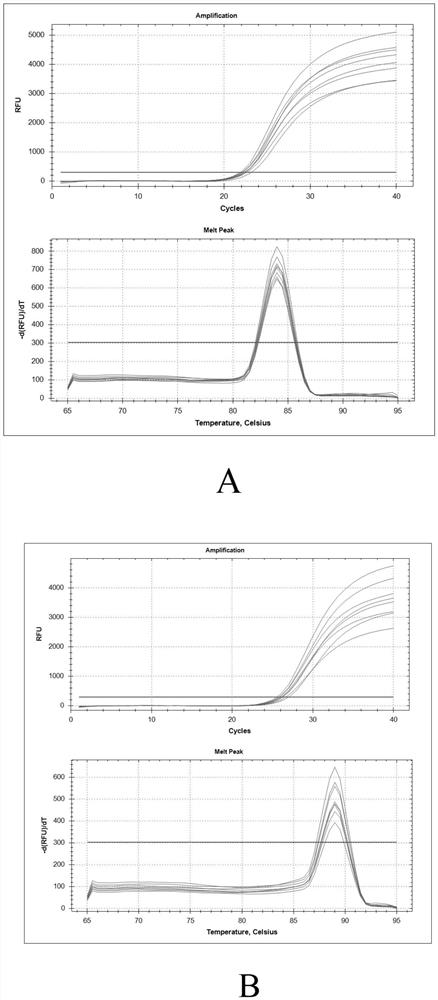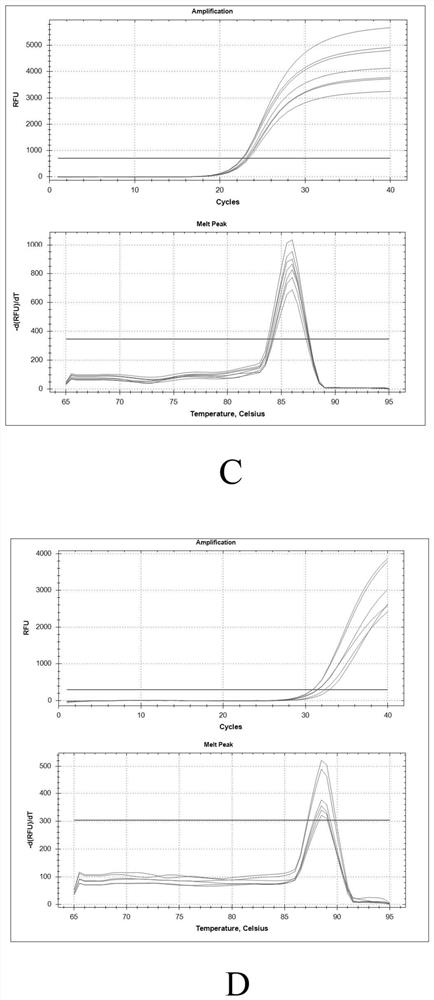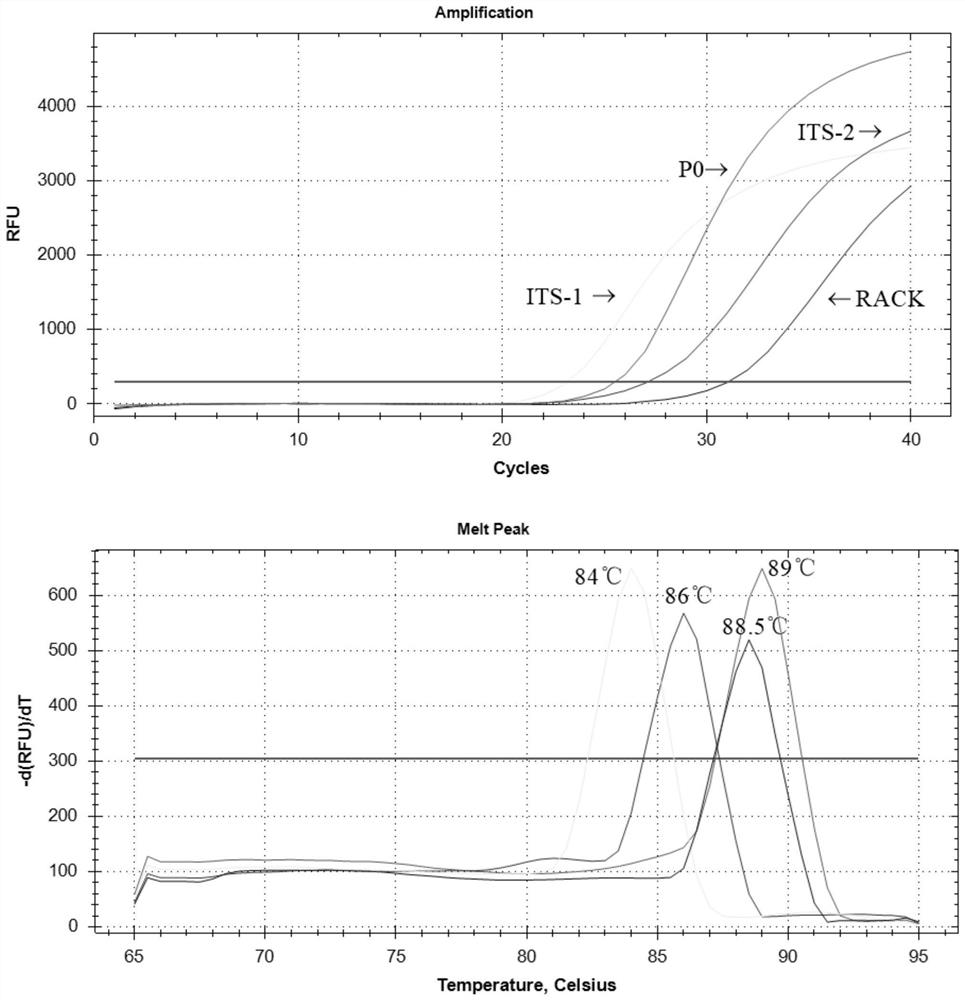Primer, method and kit for carrying out multiple tandem PCR gene disc detection on leishmania spp
A technology of Leishmania and Leishmania donovani, which is applied in the field of genetic engineering, can solve the problems of late diagnosis and treatment of cases, the lack of Leishmania detection reagents, etc., and achieve timely treatment of cases, rapid control of the epidemic, and detection results Clear and accurate results with high specificity and sensitivity
- Summary
- Abstract
- Description
- Claims
- Application Information
AI Technical Summary
Problems solved by technology
Method used
Image
Examples
Embodiment 1
[0030] Example 1 Primer Design
[0031] For four different types of Shmania, four positive recombinant plasmid templates containing ITS-1, ITS-2, P0, and RACK target gene fragments were constructed, and the plasmid DNA was extracted and stored in a -80°C ultra-low temperature refrigerator. Retrieve gene sequences (GenBankaccession no: AF306777, JN673394, JN673389, JN673385, AB175625, AY297458, AF499109 and M12691), use Primer Premier V5.0 and Oligo V6.22 for primer design and evaluation, and build nested primer pairs. For primer information, see Table 1.
[0032] Table 1. Primer information
[0033]
[0034]
Embodiment 2
[0035] Embodiment 2 multiplex tandem PCR
[0036] 1. Making gene discs
[0037] Take 11 μL of internal primers, add them into the amplification reaction plate, and adjust the concentration so that the final concentration reaches 0.4 μmol / L. Then place the amplification reaction plate under the condition of -50° C. for 20 minutes to dry, then use a parafilm to seal the amplification reaction plate, and finally place the amplification reaction plate under the condition of 4° C. for use.
[0038] 2. Multiplex tandem PCR
[0039] The first round of PCR amplification reaction system includes: 0.3μL Mix1, 20ng nucleic acid template, 0.2μmol / l external primer mixture (equal amount of each group of external primers added), 25μL Mix2, and finally use ddH 2 O supplemented to 50 μL;
[0040] The amplification process was as follows: pre-denaturation at 95°C for 10 min; denaturation at 94°C for 30 s; annealing at 58°C for 60 s; extension at 72°C for 60 s, a total of 20 cycles; final ex...
Embodiment 3
[0043] Example 3 MT-PCR system specificity verification
[0044]According to the template DNA preparation method, respectively extract the positive recombinant plasmid template DNA containing ITS-1, ITS-2, P0, RACK gene target fragments, and then use the established system to detect the positive control DNA, adenovirus (adenovirus, type 1 and type 4), influenza A viruses (influenza A viruses, H1N1 pdm09, H3N2 and H5N1), influenza B virus (influenza B virus), rhinovirus A (human rhinovirus A) and dengue virus (dengue virus) reverse transcribed DNA to verify the specificity of the system.
[0045] The experimental results show that the system detects positive control DNA, adenovirus, influenza A virus, influenza B virus, rhinovirus A, and dengue virus with a positive coincidence rate and a negative coincidence rate of >95%, which can exclude the interference of other viral nucleic acids , the accuracy is reliable, and the specificity meets the requirements.
[0046] After the ...
PUM
| Property | Measurement | Unit |
|---|---|---|
| Sensitivity | aaaaa | aaaaa |
Abstract
Description
Claims
Application Information
 Login to View More
Login to View More - R&D
- Intellectual Property
- Life Sciences
- Materials
- Tech Scout
- Unparalleled Data Quality
- Higher Quality Content
- 60% Fewer Hallucinations
Browse by: Latest US Patents, China's latest patents, Technical Efficacy Thesaurus, Application Domain, Technology Topic, Popular Technical Reports.
© 2025 PatSnap. All rights reserved.Legal|Privacy policy|Modern Slavery Act Transparency Statement|Sitemap|About US| Contact US: help@patsnap.com



